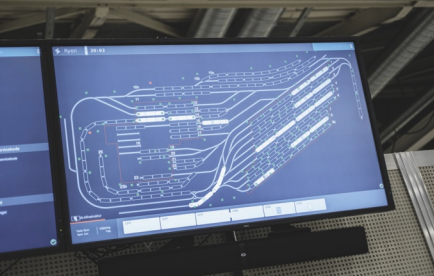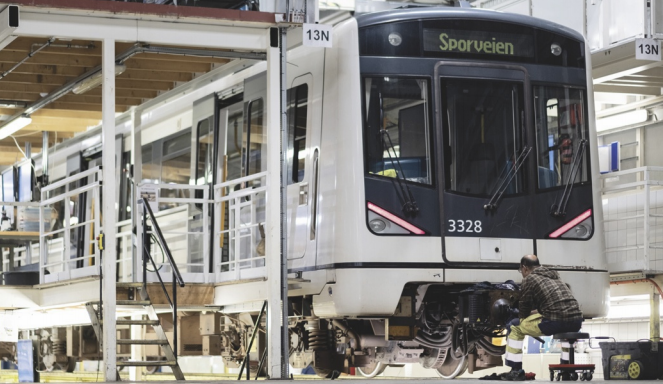The Norwegian capital, Oslo, is the 2019 European green capital. The city maintains a sustainable way of life by utilising public transport services as an alternative to using a car. Siemens RTLS helps subway operators provide a high-performance train system, making it an attractive choice to the public.
By 2030, Oslo hopes to reduce CO2 emissions by 95% and become a car-free city, with the subway system making a significant contribution in helping them reach this goal.
There are over 115 trains operating every day, carrying almost 350,000 passengers along a rail network that spans over 86km. The network always needs to be operating at full capacity to ensure that the public opt for this mode of transport over using a car.
To make this happen, modernisation of the subway system is being put into action. With the ability to automate planning processes, it reduces the number of failures, improves flexibility, decreases response time, and heightens efficiency.
Previously, there were numerous digital systems already in use at Sporveien (Norway’s public transport operator), including digital timetables and digital maintenance records for trains. However these digital systems could only process information that has been sent directly to them, which caused problems, especially when it came to synchronisation of train positions with the digital work-shop system. Employees would waste a lot of time with manual efforts, phone calls and unnecessary train searches, causing delays in processing rolling stock.
Siemens SIMATIC RTLS system has now been put in place to correct these issues and optimise the subway system.

All trains were equipped with transponders and antennas, allowing them to be automatically located in real-time using RTLS gateways. Train information is then fed into visualisation in the workshops of Sporveien using the SIMATIC Locating Manager and combined with other management systems. All employees can now see the position of every train in every depot and retrieve any necessary information that they are looking for, including when the next service is due, when the train needs to be back on the line and if there is any maintenance to be done.
This new solution makes work for employees considerably easier, automating a number of jobs that would have otherwise had to be done manually. This removes the chance of human error, speeds up processes, takes away the need for multiple different programs and paper documents, and offers a visual representation of the entire work system. Employees will have all the information at their fingertips with just a few clicks of their mouse.
The upgraded planning and provision of the trains maximises service intervals, improves fleet utilisation and also reduces costs. SIMATIC RTLS is an important component in the continuous improvement of public transport services.
